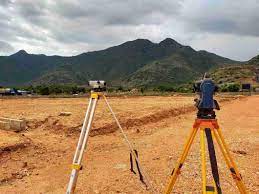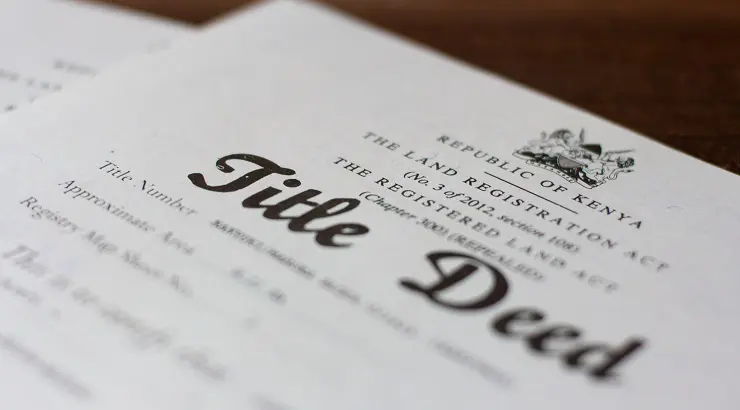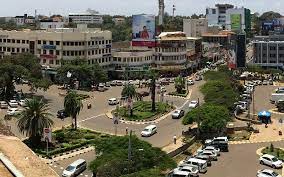How to Finance Land Purchase in Kenya
Compare loans, SACCOs, developer plans and savings strategies to finance land purchase in Kenya. Learn exact costs (stamp duty, legal fees), eligibility, hybrid options, timeline scenarios and a checklist to choose the fastest, cheapest and safest route. (Primary keyword: finance land purchase Kenya)
Introduction
Buying land in Kenya is a major milestone — but how you choose to finance land purchase in Kenya determines whether the process will be smooth or stressful. Many Kenyans dream of owning a plot for their home, farming, or investment, yet few understand the financing paths available to them. Whether you’re a first-time buyer saving through a chama, a Kenyan in the diaspora exploring a land mortgage Kenya, or an investor comparing loan options, understanding both loans and savings will help you make the right decision for your situation. This guide breaks down how to choose the best route, reduce risk, and plan financially for a lasting investment.
Understanding the Land-Purchase Landscape in Kenya
Why land remains an attractive asset (inflation hedge, appreciation)
Land remains one of the safest and most rewarding investments in Kenya because it almost always appreciates in value. Unlike movable assets such as cars or electronics, land gains worth over time as demand for housing and development grows. It’s also a powerful hedge against inflation — as the cost of living rises, so does land value, preserving your purchasing power. For investors, this means that even a small plot bought today could double or triple in value over a few years. That’s why many Kenyans see land as both a financial and emotional milestone, offering security for future generations.
Types of land buyers (owner-occupiers, investors, diaspora, chama groups)
Every type of buyer approaches financing land in Kenya differently. Owner-occupiers typically buy land with the intention of building a home and prefer structured repayment plans such as SACCO or bank plot loans. Investors, on the other hand, focus on locations with fast growth, often using short-term credit or savings to buy and resell quickly. Diaspora buyers usually rely on trusted agents, power of attorney, or land buying loan Kenya options from banks that cater to overseas clients. Chama or group buyers combine savings to acquire larger parcels, allowing them to share costs and profits. Recognising which category you fall into helps you match your financing method to your goals, repayment ability, and risk appetite.

Land categories: residential, agricultural, commercial — how they affect financing
The type of land you buy directly affects how easy or difficult it will be to finance. Residential plots, especially those in planned estates or near urban areas, are usually easier to fund through land mortgage Kenya or SACCO loans because lenders can easily assess value and title clarity. Agricultural land, especially in rural zones, might require self-financing or savings-based approaches since banks are often cautious about undeveloped land. Commercial land is considered high-value and may qualify for longer repayment periods but with stricter eligibility checks, higher deposits, and proof of business use.
Before applying for financing, it’s crucial to verify the land’s zoning, title status, and development potential. This ensures you don’t take a loan for a plot that later faces restrictions or disputes.
Total Cost Breakdown: What You Must Budget for (Beyond Purchase Price)
When planning to finance land purchase in Kenya, it’s essential to look beyond the quoted selling price. Many buyers are caught off guard by the extra costs that come with transferring ownership, processing documents, and preparing the plot for use. Understanding these expenses early helps you budget accurately and avoid financial strain during or after purchase.
Valuation, survey, and transfer fees
Before any lender or buyer finalises a transaction, a valuation must be done to determine the market value of the land. Banks use this figure to decide how much to lend under a land mortgage Kenya or plot purchase loan. Valuation fees typically range from 0.5% to 1% of the property value, depending on the firm and plot location. A licensed surveyor is also required to confirm plot boundaries and dimensions — crucial for avoiding boundary disputes later. Transfer fees, charged at the Lands Office, facilitate the change of ownership and vary based on the county. Including these fees in your budget ensures a smoother financing and registration process.
Stamp duty (how it’s calculated) and registration costs
Stamp duty is a mandatory tax on property transfers in Kenya. It’s calculated as a percentage of the land’s value — typically 4% in urban areas and 2% in rural regions. When using a land buying loan Kenya, the lender will often require proof of stamp duty payment before releasing funds. Registration fees, which cover the legal recording of your ownership at the Lands Registry, are smaller but equally vital. Together, these costs can significantly affect your total budget, so it’s wise to set aside enough cash or include them in your financing plan.
Legal fees, KRA obligations and notary/consent costs
Hiring a qualified property lawyer is non-negotiable when purchasing land. Lawyers handle the sale agreement, conduct title searches, and oversee the transfer to ensure everything is legitimate. Legal fees are guided by the Law Society of Kenya and generally range from 1% to 2% of the property value. Additionally, buyers must obtain a KRA PIN for tax compliance and pay any required land rent or rates before transfer. In some cases, notary or consent fees may apply, especially for land under leasehold or controlled areas. These charges might seem small individually but can add up quickly, so factor them in when calculating how to finance land purchase in Kenya.

Survey & boundary marking, utilities connection estimates
After purchase, you’ll likely spend more on post-acquisition costs. A fresh survey and boundary marking may be necessary, especially for newly subdivided plots. These confirm your land’s exact size and prevent encroachments. If you plan to develop the land, connecting water, power, or sewer lines can also be costly — sometimes rivaling the transfer fees themselves. Estimating these expenses early ensures you don’t exhaust your funds immediately after buying the plot. Whether self-financing or using a land mortgage Kenya, budgeting for these extras gives you a realistic picture of the total investment.
Loan Options for Land in Kenya (Banks & Mortgage Products)
For buyers who can’t afford to pay cash, Kenya’s financial institutions offer multiple loan products designed for land acquisition. Understanding these options — from plot loans to full land mortgages — helps you select the product that matches your financial strength, repayment ability, and property type.
Plot purchase loans vs. mortgage for improved land
A plot purchase loan is specifically meant for buying undeveloped or vacant land. It usually has shorter repayment periods, smaller loan limits, and slightly higher interest rates compared to standard mortgages. A land mortgage Kenya, on the other hand, applies to plots that already have development or building plans. Mortgages may offer longer repayment tenures, often between 10 to 25 years, making them suitable for homebuilders. Choosing between the two depends on your goal — whether you intend to build soon or hold the land as an investment.
Typical loan-to-value (LTV), tenures, and interest ranges (how to read product sheets)
Most banks in Kenya offer up to 70–80% financing for plots with clean titles. The loan-to-value (LTV) ratio shows how much of the property’s value a lender is willing to finance — the higher it is, the smaller your deposit requirement. Interest rates for land buying loans in Kenya usually range between 13% and 16%, depending on your income stability, credit score, and loan tenure. When reading product sheets, look beyond the headline rate. Check repayment flexibility, grace periods, and whether the loan has fixed or variable interest to anticipate long-term costs.

Cost components: interest, arrangement fees, valuation fees, insurance
When taking a loan, the visible interest rate isn’t the only expense you’ll pay. Banks also charge arrangement or processing fees — usually 1% to 2% of the loan amount — to cover administrative costs. Valuation fees are paid to determine the land’s market worth, while insurance covers risks like death or default during repayment. Combining these costs can raise the actual borrowing expense significantly. By calculating all hidden costs upfront, you’ll have a clearer idea of your true repayment burden and avoid surprises.
Bank products, SACCOs, microfinance & diaspora lending
When financing land purchase in Kenya, buyers can choose from various institutions depending on their income, location, and investment goals. Options include banks, SACCOs, microfinance institutions (MFIs), and diaspora-focused lenders. Understanding the pros and cons of each helps buyers make informed financing decisions.
How SACCOs differ from banks (rates, flexibility, group guarantees)
SACCOs often offer more affordable and flexible loans compared to traditional banks. They rely on member savings to fund loans, which means lower interest rates—typically between 10–13% per annum, compared to 13–16% from banks. Repayment terms are also negotiable, and group guarantees replace the need for collateral in many cases.
Unlike banks, SACCOs prioritise community trust, making them ideal for chamas and cooperative buyers. However, their loan limits depend on the member’s savings multiple, which may restrict large land purchases.
Microfinance & MFB options for small plots
Microfinance banks (MFBs) serve buyers seeking smaller plots—often under KSh 2 million. These institutions, like Faulu, KWFT, and SMEP, provide shorter-term, higher-interest loans (15–20%) with flexible collateral options such as logbooks or salary assignment.
Their major advantage is accessibility—buyers without strong credit histories can qualify with minimal paperwork. However, repayment pressure can be high, so buyers should calculate affordability carefully before signing any loan offer.

Diaspora mortgage products & power-of-attorney essentials
For Kenyans abroad, banks like KCB, Equity, and Co-operative Bank offer diaspora mortgage loans tailored for land and property investment. These loans allow buyers to finance land remotely, with repayment through international remittances. Typical tenures range from 5–15 years, depending on the bank and country of residence.
It’s essential to appoint a trusted Power of Attorney (POA) representative in Kenya to handle legal and registration processes on your behalf. Without this, document execution and land transfer become complicated. Always work with licensed conveyancing lawyers and verify property titles through the Ministry of Lands eCitizen portal.
Developer & seller financing, instalment plans and purchase agreements
Developer and seller financing options have become increasingly popular in Kenya’s real estate market. They allow buyers to secure land without taking traditional bank loans. While flexible, these arrangements demand caution and proper documentation to avoid legal and financial pitfalls.
Typical developer instalment structures and legal traps to watch for
Most developers offer instalment plans where buyers pay 10–30% deposit upfront and spread the balance over 6–36 months. These plans are convenient for buyers with steady income but limited savings.
However, many agreements lack clarity on penalties, title transfer timelines, and refund conditions. Always ensure your lawyer reviews the Sale Agreement, confirming that payment milestones are tied to tangible progress or title issuance. Avoid projects where the land title remains undeveloped or under dispute.
How to negotiate seller / developer financing (balloon payments, escrow)
Negotiating directly with developers or landowners can yield better terms, especially if you can pay a significant deposit. Discuss interest-free instalments, or if interest is applied, ensure it’s clearly calculated on the reducing balance.
Ask to route payments through an escrow account, which ensures both parties’ security until full transfer. You can also propose balloon payments—smaller instalments upfront, followed by one large final payment—to ease your cash flow.

When developer finance is better than bank loans
Developer financing is ideal if you lack credit history or collateral for bank approval. It’s faster to process, offers flexible instalments, and sometimes comes interest-free. However, it’s only advisable when the developer holds a clean title and can legally transfer ownership after completion.
Buyers should still perform due diligence—obtain a search certificate, verify subdivision approvals, and confirm project registration. In some cases, a hybrid approach—combining partial savings and developer credit—reduces total cost.
Self-financing: savings strategies & tools to buy land cash
Buying land in Kenya through self-financing remains one of the safest and most empowering approaches. It eliminates loan interest and avoids the pressure of monthly repayments. However, it requires discipline, realistic goals, and smart saving tools to reach the purchase target efficiently.
Goal-based saving (timeline, target calculations) and high-yield accounts
To buy land using savings, start by setting a clear goal—the total cost, timeline, and monthly saving target. For example, if a plot costs KSh 1.5 million and you plan to buy it in three years, you’ll need to save roughly KSh 42,000 per month (excluding returns).
Use high-yield savings accounts, money-market funds, or fixed deposits offering 10–12% annual returns. These tools protect your capital and generate interest faster than ordinary accounts. Always automate contributions to maintain consistency, even when expenses fluctuate.
Group savings: chamas, investment clubs, crowd-funding & legal setup
Group savings remain a popular way to finance land purchases, especially for chamas and investment clubs. Members contribute periodically to build a pool of funds, allowing the group to purchase larger parcels or negotiate bulk discounts from developers.
To make it sustainable, register your chama legally under the Social Development Department or as a Limited Liability Partnership (LLP). Use a constitution outlining contribution rules, withdrawal terms, and dispute resolution mechanisms. Online platforms like Chamasoft or Kapu Africa can help track contributions and automate transparency.
Crowdfunding, though newer, is gaining traction for community land investments, especially in the diaspora. Always verify the credibility of platforms and maintain written agreements for each participant.
Pros/cons: opportunity cost, missing market windows vs. interest savings
Self-financing offers full ownership from day one—no debt, no interest, and fewer risks of repossession. However, it can take years to save enough, during which land prices may rise, eroding your purchasing power.
Buyers must weigh this opportunity cost against the safety of avoiding loans. In fast-developing towns like Kitengela, Ruiru, or Juja, waiting too long can mean paying double later. A mixed approach—saving aggressively while monitoring affordable listings—can help you act fast when an opportunity arises.
Hybrid approaches: combining savings, short-term loans and bridging finance
For buyers who don’t want to wait years to accumulate savings yet wish to minimise borrowing costs, hybrid financing offers a balanced solution. It involves using part savings, part loans, and sometimes short-term bridging finance to close land deals faster.
Typical hybrid structures (deposit from savings + bank bridging loan)
A common hybrid model involves paying the deposit (20–40%) from personal savings, while covering the balance through a bank or SACCO loan. This approach lowers your total debt, reduces interest paid, and improves loan approval chances since you already have equity in the property.
For instance, using KSh 600,000 in savings for a KSh 2 million plot means borrowing only KSh 1.4 million—cutting total interest by nearly half over five years. It’s ideal for disciplined savers ready to take advantage of time-sensitive land offers.

When a hybrid wins: examples and simple math (interest vs. appreciation)
Hybrid financing is most effective when land prices are rising faster than loan interest rates. For example, if land in Athi River appreciates by 12% annually and your bank loan costs 10%, financing part of the purchase through a short-term loan can actually generate a net gain in value.
It’s also ideal for investors planning to resell or develop the land quickly, using the equity growth to settle the balance. The key is ensuring that the loan duration doesn’t exceed the appreciation horizon—typically under three years.
Short-term bridging or overdraft solutions for quick closings
Sometimes, buyers find ideal land deals but need to close fast before other bidders step in. In such cases, bridging loans or personal overdrafts can fill the short-term gap while waiting for other funds or asset sales to mature.
Commercial banks, SACCOs, and even employers offer these facilities, typically for 3–12 months at slightly higher rates (12–18%). They are best used for secured transactions where land transfer happens quickly to avoid accumulating interest unnecessarily.
Always ensure the title search, valuation, and transfer documents are complete before drawing any short-term facility.
Eligibility, documentation & application checklist (ready-to-download)
Before applying for any financing or making payments, every land buyer in Kenya must prepare the correct documents. Proper documentation speeds up loan approval, ensures compliance, and prevents costly legal delays. Whether you’re an individual, a chama, or a diaspora investor, having a full checklist saves time and stress.
ID, payslips, bank statements, title docs, valuation, consent letters
For individual buyers applying for a land loan or mortgage, lenders typically require:
- A copy of your National ID or passport
- KRA PIN certificate
- Recent payslips (3–6 months) or business income proof
- Bank statements (6–12 months)
- Copy of the title deed or plot agreement from the seller
- Land valuation report by an approved valuer
- Spousal consent (if married) and transfer consent from the land control board for agricultural land
Ensure every document is authentic and recent—most banks reject outdated statements or missing valuations.
Documentation for chamas, diaspora & non-citizens (POA, police clearance)
Group and diaspora buyers require additional documents. For chamas or investment clubs, you’ll need:
- Certificate of registration (from the Social Services Department or as LLP)
- Group constitution or Memorandum of Understanding (MOU)
- Minutes authorising the purchase
- Appointed signatories’ IDs and PINs
For diaspora buyers, documents include a Power of Attorney (POA) appointing a local representative, certified copies of your foreign passport, proof of income, and police clearance (in some cases). Non-citizens must confirm if the land is freehold or leasehold, since foreigners can only own leasehold titles under Kenyan law.
Sample checklist and 1-page downloadable PDF (call to action)
To simplify the process, we’ve prepared a 1-page downloadable PDF checklist summarising all required documents by buyer type—individual, chama, or diaspora. Use it as your reference when preparing a loan application or before signing a sale agreement.
It includes document timelines, verification tips, and lender-ready templates to fast-track approval.
Due diligence & title verification (legal steps buyers often miss)
Even the best financing deal can collapse if the land being purchased isn’t legally verified. Performing due diligence protects you from fraud, disputes, or losing your investment entirely. This section guides you through each essential verification step before you pay or borrow.
Title search steps, searching Land Registry, checking for caveats & charges
Start by conducting a title search at the Ministry of Lands via the eCitizen platform. The search reveals the registered owner, any encumbrances (charges, caveats, or disputes), and land size. Confirm that the seller’s name matches the title and the property is free from loans or pending transfers.
If you find a charge listed, the land may still be under a bank loan—avoid such plots until released. Keep a digital and printed copy of the search certificate as proof of verification.
Physical verification: boundaries, neighbours’ declarations, access rights
Beyond paperwork, visit the site physically. Check for visible beacons and boundary markers, confirm access roads, and verify that the plot matches the title map. Speak to neighbors or area chiefs to confirm the land’s ownership history and any pending disputes.
If possible, involve a licensed surveyor to remeasure boundaries and ensure no overlap with neighbouring plots. It’s also wise to confirm that the land isn’t under public utility designation or flooding zones.
Using a lawyer vs. DIY: red flags and minimum checks
While some buyers prefer handling verification themselves, hiring a conveyancing lawyer significantly reduces risk. A lawyer will identify fake titles, verify registration authenticity, and flag clauses in sale agreements that may trap you financially.
DIY approaches can save fees but expose you to scams and document errors. At a minimum, ensure your lawyer reviews the sale agreement, title search, and consent forms before any payment.
Comparing costs: calculator, sample scenarios & quick ROI checks
Understanding the cost difference between saving and borrowing helps you decide which path fits your financial situation. This section illustrates simple examples and formulas to calculate which approach—loan or savings—offers better returns over time.
Example scenarios: save 18 months vs. take 5-year loan (numbers shown)
Suppose you want a KSh 2 million plot. You can either:
- Save for 18 months at KSh 111,000 per month (earning 10% annual return), or
- Take a 5-year loan at 13% annual interest with a KSh 44,000 monthly repayment.
By the time you finish saving, the plot’s value may have risen to KSh 2.4 million—so the waiting cost (KSh 400,000) may exceed the loan’s interest cost. This demonstrates that timing and market trends often influence whether saving or borrowing is smarter.

Simple formula: total cost of loan vs. opportunity cost of waiting
To decide, calculate:
> Total loan cost = principal + (interest × duration)
Opportunity cost = (expected land price growth per year × years waited)
If your expected land appreciation exceeds total loan interest, borrowing might yield a better long-term return. Always use conservative estimates to avoid overconfidence.
Callout: when rising market means borrowing may cost less than waiting
In areas like Ngong, Ruiru, and Ruai, where land prices can rise 10–15% annually, a small loan might cost less in interest than the price increase you’d face by delaying. For example, borrowing KSh 1 million at 13% for two years may cost ~KSh 130,000 in interest, but land value might rise by KSh 300,000 in that time.
This doesn’t mean loans are always better—but in rapidly appreciating zones, acting sooner through financing can be strategic.
Risk management & common mistakes to avoid
Financing land comes with both financial and legal risks. Buyers must identify common pitfalls and use protective measures to safeguard their investment and avoid long-term regret.
Overpaying, ignoring encumbrances, fake titles, unapproved subdivisions
One major risk is overpaying due to poor market research or inflated developer pricing. Always compare nearby property rates before committing. Failing to check for encumbrances or fake titles can lead to massive losses, as fraudulent plots remain common in Kenya.
Unapproved subdivisions are another danger—some developers sell land before obtaining county planning approval, making titles invalid later. Always demand subdivision maps stamped by the relevant authorities.
Borrowing more than you can comfortably repay may lead to loan defaults or repossession. Avoid over-leveraging, especially if you have other active loans. Choose fixed-rate loans where possible to protect yourself from unexpected rate hikes.
Also, understand the fine print—some banks charge penalties for early repayment, which can eat into savings if you plan to settle the loan sooner.
Practical mitigations (escrow, third-party valuation, phased payments)
To minimise risks, insist on paying through an escrow account managed by your lawyer or a trusted bank. Always seek an independent valuation to confirm the land’s true market worth before signing.
If uncertain, structure payments in phases—deposit, mid-progress, and final title handover—to maintain control and reduce potential loss.
Timeline & realistic expectations (including diaspora purchase steps)
Financing a land purchase in Kenya takes planning and patience. Whether buying through a bank loan, SACCO, or savings, knowing what to expect in each stage helps you budget time, manage documents, and avoid frustration—especially for diaspora buyers managing transactions remotely.
Typical timeline: offer → due diligence → loan approval → transfer (weeks/months)
The process of financing and buying land in Kenya follows a predictable order, usually spanning 6 to 12 weeks, depending on loan type and documentation readiness:
- Offer & negotiation (1–2 weeks) – Buyer and seller agree on price, deposit, and payment structure.
- Due diligence (2–3 weeks) – Conduct title searches, valuation, and site visits.
- Loan application & approval (2–4 weeks) – Submit documents to your bank or SACCO; approval timelines vary depending on completeness.
- Legal processing & transfer (2–3 weeks) – Your lawyer handles sale agreements, stamp duty, and title transfer.
Some lenders fast-track applications for repeat customers or salaried employees. Keeping documents ready (ID, payslips, valuation, title copy) significantly reduces delays.
Diaspora timeline and power of attorney checklist
For Kenyans in the diaspora, the timeline can extend to 3–4 months, mainly due to notarisation, mailing delays, and embassy appointments. The key document enabling smooth transactions is the Power of Attorney (POA).
A valid POA should include:
- The appointed representative’s full details (ID, PIN, address)
- Specific powers (to sign, pay, or transfer land)
- Notarisation by a Kenyan embassy or local notary public
- Witness signatures and registration at the Lands Office in Kenya
Once registered, your representative can handle all legal and financial steps on your behalf. To minimise risk, send funds only through secure bank channels or escrow, not personal agents.
How to speed up closing (pre-approval, escrow)
Buyers who want to close deals faster can take practical steps:
- Get pre-approved for a loan or SACCO facility before identifying land. This gives you leverage and reduces bank processing time.
- Use escrow services to hold funds safely while documents are processed.
- Engage your lawyer and valuer early, ideally before property selection.
- Digitise documents (ID, PIN, statements) so you can share them instantly with financiers.
Pre-approval is especially useful in competitive markets like Ruiru or Ngong, where plots sell quickly. It shows sellers you’re a serious buyer, making negotiations easier.
Conclusion — choose the right route to finance land in Kenya
Financing a land purchase in Kenya requires aligning your budget, urgency, and risk appetite with the right funding route. Whether you use a SACCO loan, developer instalment plan, or self-financing through disciplined saving, each path has unique benefits and trade-offs. Start by evaluating your liquidity — how much cash you can mobilise without strain — then weigh the urgency of securing the land versus waiting to save.
For investors seeking flexibility, hybrid models (mixing savings and short-term credit) offer balance, while diaspora buyers can use POA-backed mortgages or trusted local lawyers to manage purchases safely. Remember to always conduct due diligence, confirm title authenticity, and budget for extra costs like stamp duty, legal fees, and valuation charges.
To get started:
- Download our free checklist for required documents and cost comparison tools.
- Run the financing calculator to test ROI between saving vs. loaning.
- Consult a licensed financial advisor or property lawyer before committing.
By making informed, step-by-step decisions, you’ll not only secure your dream plot but also ensure long-term financial peace of mind.



